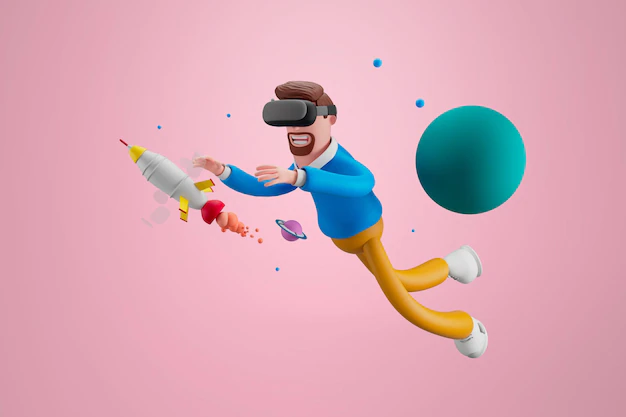The Innovative Future of Gamification In EdTech

Gamification In EdTech – People of all ages have found benefits from using interactive learning with animations and applications.
Another interesting change that has made a big difference in the EdTech industry is the addition of games and game-like elements.
Since gamification became popular in the industry, a study found that the global education gamification market was worth $697. 26 million in 2020 and is expected to reach $4144. 97 million by 2027.
However, EdTech start-ups and existing brands want new ideas on how gamification could change the way we learn in the future.
The pandemic made schools use more technology for learning, which helped the idea of gamification grow. Educators are interested in using gamified learning to make eLearning better.
The idea of gamification in EdTech was to make learning more fun by using a video game style. This would encourage students to participate and interact more during their lessons.
In this article, we will talk about how using games in education technology could bring new ideas and improvements. We will also discuss the good things about using games in online learning.
Read: 7 Significant Psychological Ideas For Gamification Strategies
Gamification in EdTech Learning
In the effort to continue providing learning during the pandemic, innovation has played a central role in the education sector.
From advanced learning modules that help students explore their interest in programming languages to a free subscription model, things have taken a leap forward.
Similar interest in innovation is observed among parents, who are more willing than ever to invest in technology that can promote learning. These include using DIY kits or STEM toys that provide digital content to reduce stress and delays in learning using standard practices.
Additionally, the introduction of personalization using AI has enabled innovations such as augmented reality (AR) and virtual reality (VR).
Reward Using Gamified Learning
Another important reason for the EdTech industry to invest in gamified learning is to better regulate how much time students are spending on learning a particular topic.
Students can use games and pictures to learn when to use the app, so they don’t get stressed and make the most of their time.
Additionally, students who are very productive during their learning time can earn certificates for moving up to a higher level. Difficult and time-consuming subjects can be taught to students in a fun way using games.
Interactiveness and Connectivity
Over time, the idea of learning is no longer limited to students. Whether it’s training professionals or engaging young minds, using applied elements in an app can make learning a more engaging task. These elements often include quizzes, quizzes, case-based questions, or graphic representations of topics students need to learn.
Additionally, it’s important for EdTech companies to help teachers and coaches create learning spaces that are easy to follow.
To help create an enjoyable learning experience for students, instructors need to receive in-depth guidance on how to balance fun elements with theoretical learning, which is a fairly easy task to achieve when applying gamification.
Game Lessons
When it comes to gamification, EdTech companies have the opportunity to encourage students to have better concentration skills and cognitive abilities.
Additionally, gamification makes things even more fun and more relevant to real-world situations.
Learning is about inspiring users through a creative and engaging learning process. Gamification can help users by providing illustrations that ignite passion for even the most sophisticated topics.
Innovative Learning
Using games and game-like elements in education technology is the future of innovation in the industry.
New technology like AI, Big Data, cloud technology, IoT, mobile learning, and VR can make gamified learning even better. This helps schools use games to keep students interested in learning.
Additionally, using game elements can make it more likely for students to actually use what they learn in real life, because it allows them to be creative.
By showing how to use the things we learn in real life, gamified learning can help teachers teach students better.
Gamification can help promote educational technology and show how well apps work on immersive technologies.
Improved Relationships and Stress Relief
Last but not least, gamification in EdTech helps students explore new concepts and topics in innovative ways.
Using gamification techniques in eLearning applications can even facilitate the relationship between students and tutors, while reducing the hassle of application standardization.
Students who engage in educational relationships through play can benefit from exposure to concepts in a more rational way.
Additionally, gamified learning helps reduce the pressure students may experience when taking tests in a real-life environment.
In general, students and teachers tired of the widespread anxiety they experience with traditional educational methods may favor gamification to avoid the difficulties associated with standard learning processes.
Competition and Engagement
Industry experts and people who haven’t tried gamification in education believe that using games in learning can help students stay more interested.
However, using game elements in learning can also be a challenge for learning platforms that don’t use them or believe in the value of traditional practices. This competition also affects students.
Some students do better when they use games in their learning instead of other online education methods. However, using game design in education can make learning more enjoyable and exciting for students, while also promoting a sense of competition.
For example, using VR headsets in learning apps could make learning more interactive and practical.
Conclusion
The idea behind gamification is to make learning more fun and interactive. Gamification makes learning easier and more fun for students. It helps students to be more active and calm while they’re learning.
It also allows them to learn without worrying about making mistakes, especially when they use simple learning methods to improve their skills. The EdTech industry will probably make more money and grow by using gamification.
Furthermore, the new way of learning could help teachers teach more students. EdTech and gamification are designed to work together in the future to help the industry grow. However, combining these two ideas requires a smart and careful approach to making sure things are done well.
In order for schools to provide a smooth and modern way of learning for students, they need to make sure that information is shared regularly.
This will require the use of technology to test and improve the learning experience.
The EdTech industry needs to know that if they only focus on gamification, they might not get as much attention and might not be able to stay ahead of others. Instead, adding other technologies like AI, VR, and others.
People can work towards achieving the growth that the EdTech industry is expecting in the next few years.
In short, to be successful with gamification in EdTech, we need to be smart and creative in how we use technology for learning. If you can make learning fun and easy for teachers and students with games, you will be ahead.






